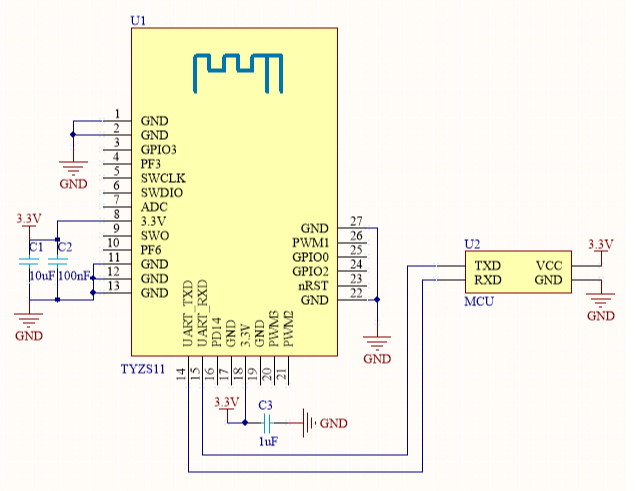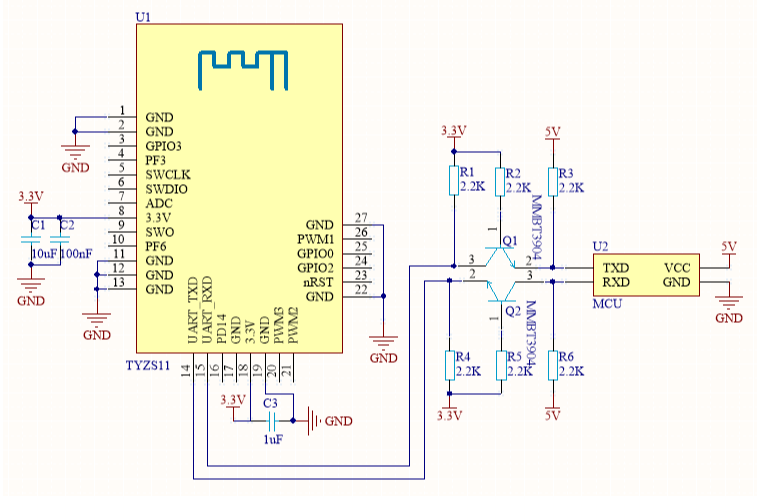TYZS11 Module
Last Updated on : 2020-12-26 08:33:33download
Scope of application
This topic describes relevant information about the TYZS11 module during MCU connection development.
TYZS11 is a low power embedded Zigbee module developed by Tuya Smart. The module consists of a highly integrated radio-frequency identification (RFID) chip EFR32MG13P732 and a few peripheral components, with a built-in 802.15.4 PHY/MAC Zigbee network protocol stack and various library functions. TYZS11 also has a low power 32-bit ARM Cortex-M4 processor, 512 KB flash, 64 KB RAM, and rich peripheral resources.
As a FreeRTOS platform, TYZS11 integrates all function libraries of Zigbee MAC. You can develop your own embedded Zigbee products.
For more information, see TYZS11 Module Datasheet.
Typical application diagram
-
Reference diagram of coordinated processing mode of the module and 3.3 V MCU

-
Reference diagram of coordinated processing mode of the module and 5 V MCU

Design specification
-
Module power supply:
- When the module is in the continuous transmitting (TX) status, the maximum current reaches 120 mA. It is recommended that the supply current of the module should exceed 200 mA, and the total capacity of the external filter capacitor should exceed 10 uF.
- In the PCB layout, the filter capacitor at the power input pin shall be arranged near the power supply pin.
-
Module pin:
- The nRST pin only resets the module hardware, but cannot clear Zigbee pairing information.
- The ADC port cannot be used as an ordinary I/O port. When not in use, the pin can float. As the ADC input port, the input voltage ranges from 0 V to AVDD, which is configured in the software.
- The test pin is not recommended.
-
Radio frequency (RF) of the module:
- By default, PCB antenna is used. An external copper rod spring antenna can be connected through the connector for wireless extended coverage in complex installation.
- When a copper rod antenna is used in the Zigbee module, it is recommended that the distance between the module antenna and other metal parts should be at least 15 mm, in order to optimize the wireless performance. It is recommended that the antenna area corresponding to the adapter board should be hollowed out to achieve the best performance. Wiring and copper pour are not allowed in the antenna area of the PCB, in order not to affect the antenna performance.
Is this page helpful?
YesFeedbackIs this page helpful?
YesFeedback





